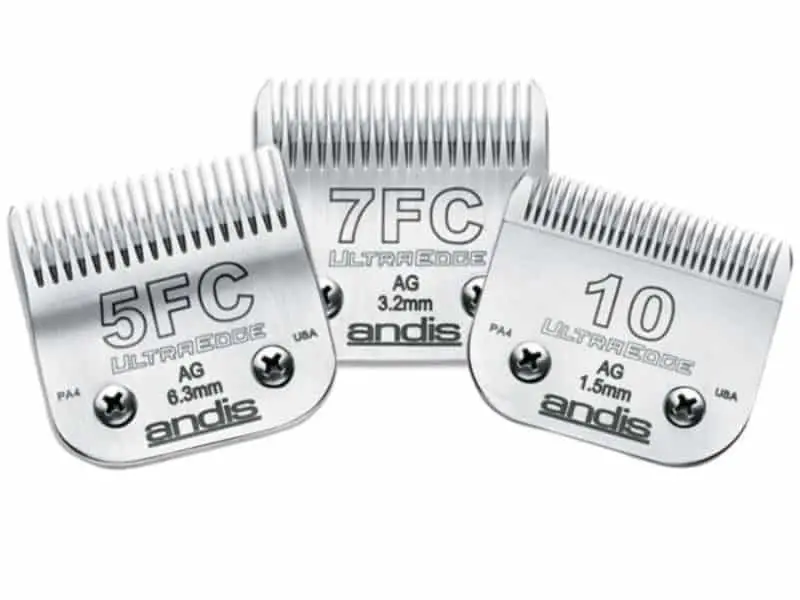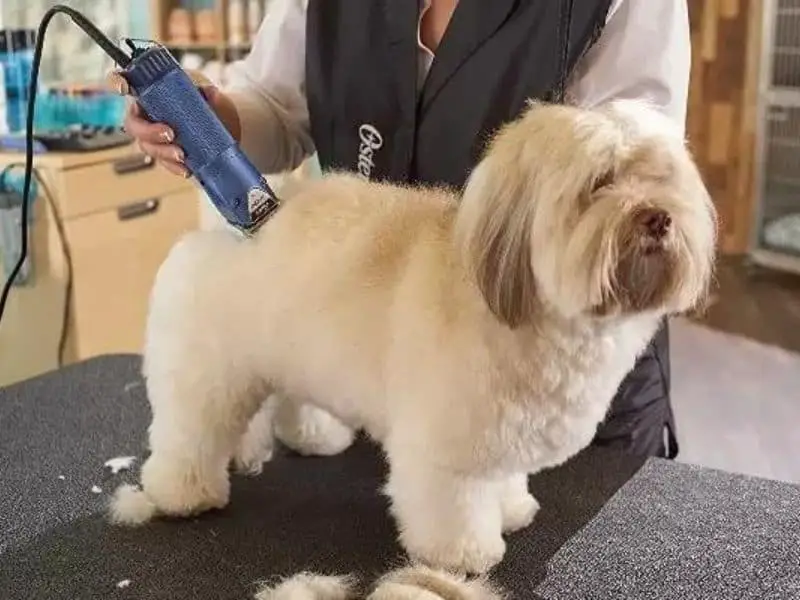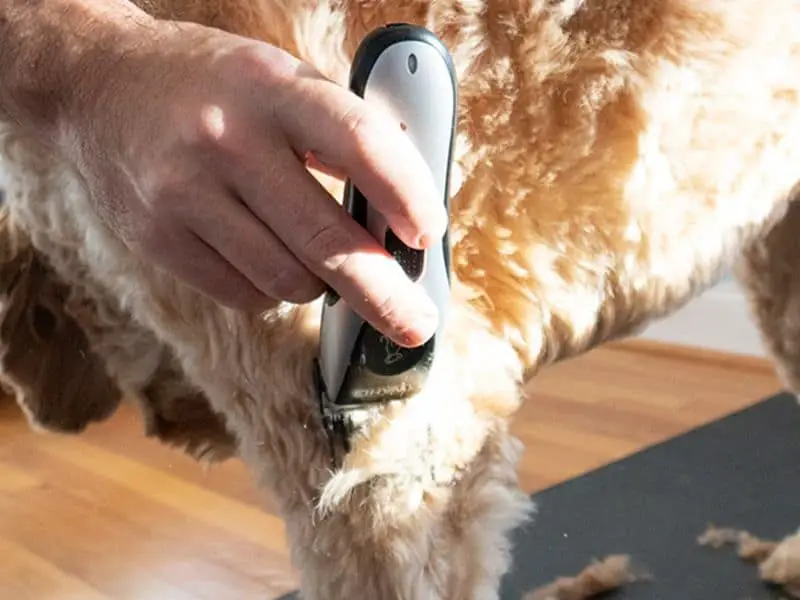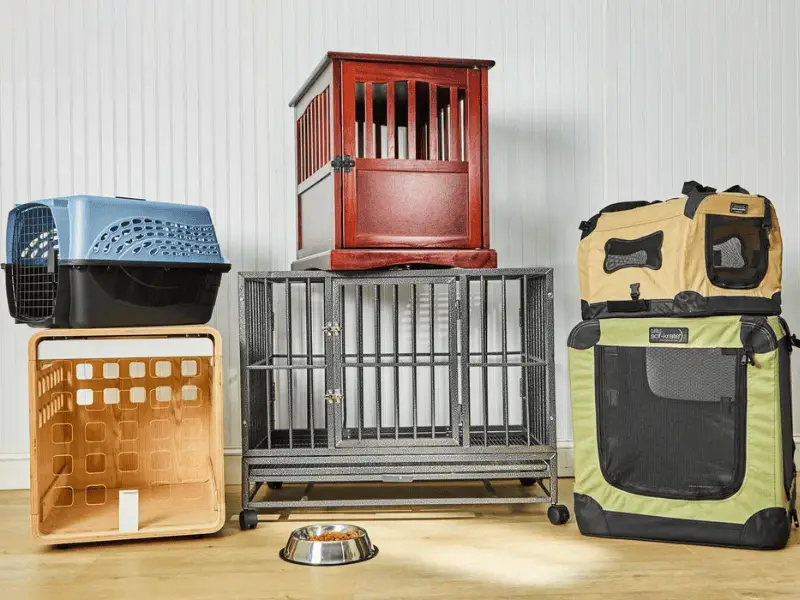When it comes to trimming your dog’s fur, understanding dog clipper blade sizes is crucial. In this section, we will uncover the importance of choosing the right blade size, how clipper blades work, and the different types available.

By gaining insight into these aspects, you’ll be equipped with the knowledge to confidently groom your furry friend with ease and achieve professional results.
Importance of Choosing the Right Blade Size
The size of the blade for dog clippers is very important. It can’t be stressed enough! This is because it decides the length of fur that will remain on your pup’s coat after grooming. Picking the right one is key to having a successful session.
How Clipper Blades Work
Clipper blades use sharp teeth or blades that move quickly to snip hair. An electric motor produces the speed and force needed for cutting. Blade size describes the length of the cutting teeth. Different sizes are made for different hair types.
Smaller blade sizes have shorter teeth, leaving less hair on your pet. Larger sizes have longer teeth, leaving more hair. Blades come in various styles and configurations for different breeds and coats. Some have wider gaps, others have finer teeth for trimming.
To keep clipper blades working well, brush off excess hair after each use. Adjust tension to make sure it operates smoothly. Resharpen when needed. Dull or damaged blades can irritate skin, so keep them sharp.
Different Types of Clipper Blades
Different clipper blades exist for grooming dogs. The variety allows groomers to meet the needs of various breeds and coat types. Using the right blade helps groomers gain the desired length and texture, while keeping the dog comfortable.
There are four main types of blades:
- Skip Tooth Blade. It has wide gaps between teeth, so thick, tangled coats can be efficiently trimmed.
- Finish Cut Blade (Full Tooth Blade). Closely spaced teeth provide a smooth finish.
- Wide Blade. Wider gaps are used for matted fur or tangled coats.
- Surgical Blade. Ultra-close teeth spacing is perfect for surgical procedures.
- Wide-Tooth Blade. Similar to Skip Tooth, but with wider gaps.
It’s important to select the right blade for the breed and coat. This way, the groomer can achieve the desired results without causing harm or discomfort to the dog. Choosing the right clipper blade is essential for efficient dog grooming. It contributes to the dog’s wellbeing.
Using the Clipper Blade Size Chart
Discover the secrets of using the clipper blade size chart to achieve perfect trims for your furry friend. Uncover how to navigate the chart effectively and gain insights on which blade sizes work best for different dog breeds. Say goodbye to confusion and give your pup the grooming they deserve.
How to Read the Blade Size Chart
The blade size chart is essential for understanding how to pick the right clipper blade size for different dog breeds. This chart helps groomers get the results they want.

To use the chart correctly, do these three steps:
- Spot the Blade Sizes: The numbers on the chart show blade sizes. Lower numbers like #10 or #15 mean shorter and closer cuts.
- Calculate Cutting Length: Each blade size has a length in millimeters or inches. A #30 blade leaves short hair while a #7F blade leaves hair 3/16th of an inch long.
- Consider Breed Characteristics: Different breeds have unique coats and thicknesses. The chart suggests sizes for breeds like Poodles (eg. #4F or #5F) and Terriers (#10 or #15).
Groomers may prefer their own sizes based on experience or client preferences.
To get professional results for any breed, understand the chart and consider factors like breed characteristics and desired outcomes.
Recommendations for Different Breeds
Different dog breeds require different grooming lengths, so it’s important to choose the right clipper blade size. This size determines the amount of hair left after grooming.
To help you decide, here’s a table that outlines the suggested blade sizes based on breed standards:
| Breed | Blade Size |
|---|---|
| Poodle | 10 or 15 |
| Golden Retriever | 4 or 5 |
| Shih Tzu | 10 or 30 |
| Yorkshire Terrier | 7 or 10 |
Before picking a blade size, consider the breed standard and desired grooming style. For example, shorter blades could be suitable for Poodles or Yorkies, while Golden Retrievers may need longer blades to maintain their fur’s natural look.
Plus, think about the pet’s comfort and safety. Some breeds have sensitive skin, so shorter blades can help avoid irritation and discomfort.
Make sure to take breed standards and individual dog needs into account to pick the right clipper blade size. Keep your blades sharp like a pup’s bark for a successful grooming session!
Maintaining and Sharpening Clipper Blades
Maintaining and sharpening clipper blades is crucial for seamless trimming. In this section, we’ll explore essential techniques such as brushing off excess hair and adjusting tension, as well as understanding when it’s time to resharpen the blades.
Stay tuned for expert tips and insights on extending the lifespan of your dog clipper blades to ensure effective and efficient grooming sessions.
Brushing Off Excess Hair and Adjusting Tension
- Brush away hair and adjust tension to maintain and sharpen clipper blades. Both steps are vital for optimal performance and desired cutting results.
- Turn off and unplug the clipper. Remove the blade. Use a stiff-bristled brush or toothbrush to brush away any loose hairs and debris from both sides of the blade. Do this thoroughly to prevent blockages or obstructions.
- Adjust tension for optimal cutting performance. Each model has different methods, so refer to the user manual. Generally, adjust tension by loosening or tightening a screw on the blade.
- Reattach the blade to the clipper unit. Plug in the clipper and test its cutting ability. Repeat until you get satisfactory results.
Brushing and adjusting tension prolongs clipper blade lifespan and maintains effectiveness.

If unsure, reach out for help. We are here to answer questions and guide you on maintaining your clippers. Don’t miss out on these tips! Take care of your clippers for a smooth grooming experience.
It’s time to give your blades some TLC – a blunt blade is worse than a bad haircut.
When to Resharpen Blades
- Check for Dullness: Examine blades to see if they are dull. Dull blades can pull hair, causing discomfort to the dog. If clippers don’t glide through fur or there’s an uneven cut, time for sharpening.
- Monitor Cutting Efficiency: Notice how clippers perform. Making multiple passes or exerting force means blades need sharpening. Keep efficiency consistent for neat results.
- Observe Blade Heat: Excessive heat buildup can be uncomfortable and cause irritation or burns. If blades heat up fast or feel too warm, sharpen them.
- Inspect Blade Teeth: Look at blade teeth. They may become bent or misaligned over time, making cutting less efficient and leading to uneven cuts. If so, get blades professionally sharpened.
- Regular Maintenance: Generally, sharpen clipper blades every 6-8 weeks. But if used more often or cutting performance drops, sharpen more frequently.
A well-groomed dog is key to a balanced friendship!
Final Tips on Easy and Safe Dog Trimming
In conclusion, understanding the importance of proper blade maintenance and leaving a comment for further questions are essential final tips for easy dog trimming using clipper blade sizes.
Importance of Proper Blade Maintenance
Regular maintenance of dog clipper blades is a must. Use and dirt can cause them to become dull. Cleaning, lubricating, and sharpening are key.

Here are some tips for maintaining dog clipper blades:
- Brush off excess hair before and after each use. This prevents clogging and maintains performance.
- Clean the blades regularly. Use a soft brush or cloth to remove any debris or hair.
- Lubricate the blades with clipper oil to reduce friction and prevent rusting. Follow the manufacturer’s guidelines for proper lubrication.
- Sharpen the blades when they become dull and cause discomfort to the dog. It’s important to maintain sharp blades for a comfy and high-quality grooming experience.
Leave a Comment for Further Questions
Questions about dog clipper blade sizes? Leave a comment below! Our team is ready to help you make the right decisions for your furry friend.
- Expert answers to your questions on blade sizes? We’re here!
- We’ll provide info on the best size for your specific needs.
- Questions on breed, maintenance, or sharpening? Ask away!
- We aim to answer promptly and accurately, so you can groom with ease.
- Leave a comment to get personalized advice tailored to you.
- Need further clarification? Leave a comment below now!
We’ll answer any details not covered yet. We understand the importance of addressing each concern and providing helpful info for an efficient and effective grooming experience.
Leave a comment now and benefit from our expertise! Don’t miss out on this chance for personalized assistance. Your inquiries are important to us, so join the conversation today!
Trimming Made Easy: An Overview of Dog Clipper Blade Sizes
- Different clipper blades leave the coat at slightly different lengths, even if the blade size is the same.
- Comb attachments can be used on #10 or #30 blades to achieve longer coat lengths.
- Scissors are typically used for coat lengths longer than 3cm.
- Before purchasing blades or comb attachments, it is important to check if your clipper is an A5 model.
- Blades made from high-carbon hardened stainless steel are durable, rust-proof, and easy to clean.



Leave a Reply